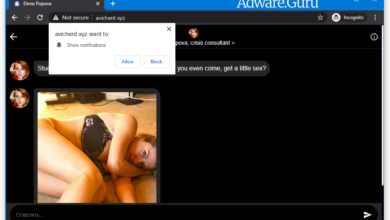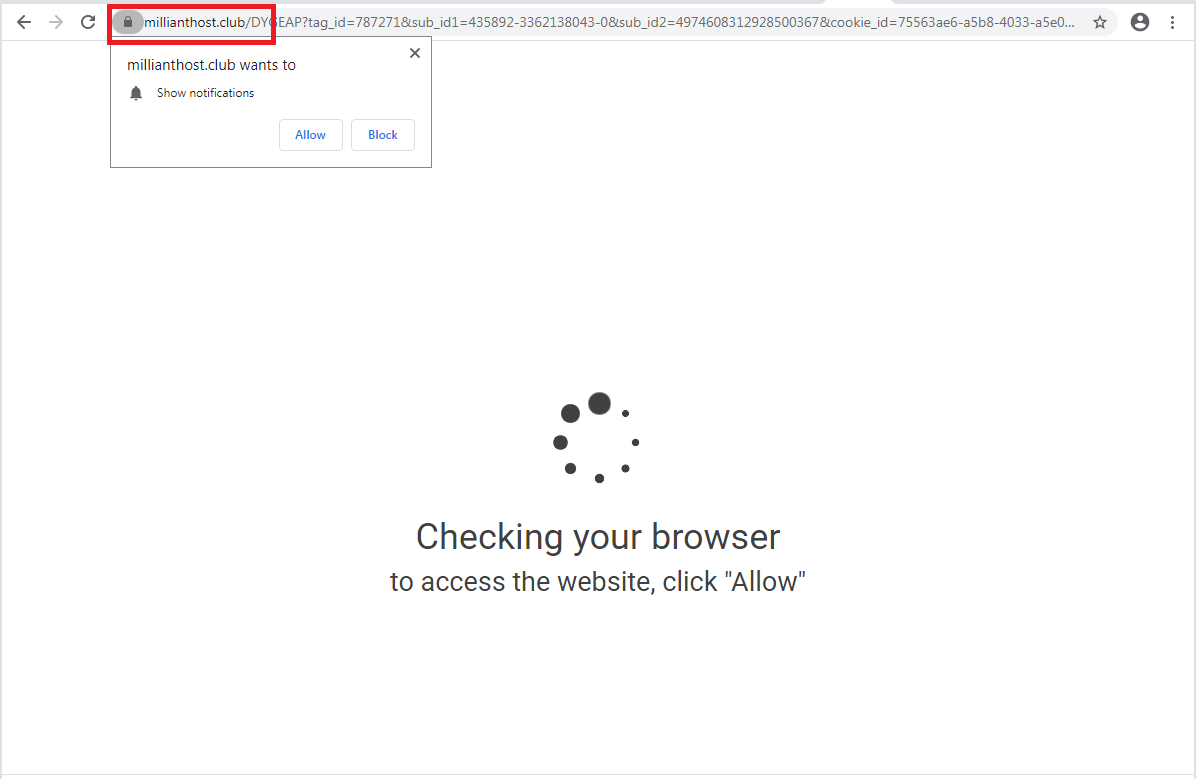Remove Recovery Virus (.recovery Files Ransomware) – MedusaLocker Ransomware
Recovery – General Info
The Recovery stands for a ransomware-type infection. The virus comes from the MedusaLocker ransomware family. Recovery was elaborated specifically to encrypt all major file types. As soon as the file is encrypted people are not able to use them. Recovery adds the “.recovery” extension for each file encrypted by it. For example, the file “myphoto.jpg“, as soon as encrypted by Recovery, will be renamed into “myphoto.jpg.recovery“. As quickly as the encryption is finished, Recovery places a special text file into every folder containing the encrypted data.The message given by Recovery text file requesting for the ransom is absolutely the like the statements given by other ransomware representatives belonging to the MedusaLocker family. It actually points out that the information is encrypted and that the only way to restore it is to use a a special decryption key. Unfortunately, this is definitely true. The kind of cryptography mechanism used by Recovery is still not properly examined. Still, it is definitely particular that each victim may be given the specific decryption key, which is absolutely distinct. It is difficult to bring back the files without the key available.
Another trick of Recovery is that the victims cannot access to the key. The key is saved on a specific server run by the frauds related to Recovery ransomware. To get the key and recover the important info people have to pay the ransom.
Recovery encrypted your documents, but that might not be the only damage done to you. The ransomware might still be hidingon your computer. To identify whether this holds true, we suggest downloading GridinSoft Anti-Malware.
Download GridinSoft Anti-Malware
GridinSoft Anti-Malware Review, How to get free trial?, EULA, and Privacy Policy.
However, regardless of the asked for quantity, people must keep away from paying the ransom. Cyber frauds are unfair, so they tend to totally disregard what their victims feel about the issue, even when the payment reaches their pockets. This is why paying the ransom typically does not provide any positive outcome and people just waste their money for nothing.
We highly advise that you do not contact these crooks and absolutely do not transfer money into their accounts. It is said to admit that there are no utilities able to crack Recovery ransomware and to recover the data data free of charge. Therefore, the just right decision is to recover the lost information from the available backup.
Virus Summary
| Name | Recovery Ransomware |
| File Extension | .recovery |
| Type | Ransomware |
| Family | MedusaLocker |
| Short Description | The ransomware encrypts all the data stored on your system and requires a ransom to be paid on your part supposedly to recover your important files. |
| Symptoms | File encryption by the ransomware is performed by means of the AES and RSA encryption algorithms. Once the encryption is completed, the ransomware adds its special recovery extension to all the files modified by it. |
| Distribution Method | Spam Emails, Email Attachments |
| Removal Tool | GridinSoft Anti-Malware |
Bear in mind that the web is now overwhelmed with threats that look comparable to Recovery ransomware. Destructive programs of such kind are usually elaborated to encrypt crucial data and to state the demand before the user to pay the ransom. The peculiarity of all such ransomware threats is that all apply a comparable algorithm to produce the special decryption key for information decryption.
Therefore, as long as the ransomware is still being developed or has some hidden bugs, by hand recovering the information is simply not feasible. The only method to avoid the loss of your important information is to routinely create backups of your important information.
Remember that even if you create such backups, they must be put into a special storage utility not connect to your main PC. You may use the Memory Stick or external disk drive for this purpose, or refer to the help of the cloud storage. If you store your backup files on your common system they may be encrypted together with other files, so it’s definitely not a good storage location.
How did ransomware infect my PC?
There are several ways used by online scams to distribute Recovery ransom virus. Despite the fact that it is uncertain how precisely Recovery injects your PC, there are some leaks through which it may penetrate the system:
- integration with third-party apps, especially freeware;
- spam emails from unknown senders;
- sites rendering free hosting services;
- pirated peer-to-peer (P2P) downloads.
Often Recovery ransomware may be presented as some genuine software application, for example, in the pop-ups instructing users to implement some crucial software updates. This is the common trick used by online frauds to persuade people into downloading and installing Recovery infection manually, by ways of their direct participation in the installation process.
In addition, the criminals might describe different e-mail spam strategies to inject malicious codes into PC. So, they may refer to to sending unsolicited spam e-mails with tricky notifications promoting users to download the attachments or click on certain download links, for example, the ones motivating users to open some photos, files, tax reports or invoices.
Needless to mention, opening such documents or clicking on such dangerous links may seriously damage the system. Fictitious Adobe Flash Player upgrade alerts may result in Recovery ransom injection. When it comes to the cracked software, these illegally downloaded programs may likewise include malicious codes causing Recovery secret installation. Finally, injection of Recovery may occur by methods of Trojans that covertly get injected into the system and install destructive tools without the user’s permission.
Is there any way to avoid the injection of Recovery ransomware?
Although there is no 100% guarantee to avoid your PC from getting infected, there are some pieces of recommendations we wish to show with you. First off, be very careful when you browse the web and especially while downloading totally free apps. Stay away from opening suspicious email attachments, especially when the sender of the email is not familiar to you.
Keep in mind that some freeware installers may include other unwanted utilities in the package, so they may be destructive. Make sure that your current antivirus software and your entire operating system is always appropriately updated.
Of course, downloading pirated software is unlawful and may result in essential damage to be produced your system. Thus, stay away from downloading cracked software. You are likewise strongly advised to reconsider your existing security software and potentially change to another security solution that can render much better services of defending your system.
Below please find the quotation from the Recovery text file:
YOUR PERSONAL ID: - /!\\ YOUR COMPANY NETWORK HAS BEEN PENETRATED /!\\ All your important files have been encrypted! Your files are safe! Only modified. (RSA+AES) ANY ATTEMPT TO RESTORE YOUR FILES WITH THIRD-PARTY SOFTWARE WILL PERMANENTLY CORRUPT IT. DO NOT MODIFY ENCRYPTED FILES. DO NOT RENAME ENCRYPTED FILES. No software available on internet can help you. We are the only ones able to solve your problem. We gathered highly confidential/personal data. These data are currently stored on a private server. This server will be immediately destroyed after your payment. If you decide to not pay, we will release your data to public or re-seller. So you can expect your data to be publicly available in the near future.. We only seek money and our goal is not to damage your reputation or prevent your business from running. You will can send us 2-3 non-important files and we will decrypt it for free to prove we are able to give your files back. Contact us for price and get decryption software. hxxp://gvlay6u4g53rxdi5.onion/21-h0oxD6Xj110EwccIdGHC BeeaWFqUavod-G4ZrrlUcsCMoJ2t91B1o4cJ7xg1AnEr4 * Note that this server is available via Tor browser only Follow the instructions to open the link: 1. Type the addres \"hxxps://www.torproject.org\" in your Internet browser. It opens the Tor site. 2. Press \"Download Tor\", then press \"Download Tor Browser Bundle\", install and run it. 3. Now you have Tor browser. In the Tor Browser open \"URL\". 4. Start a chat and follow the further instructions. If you can not use the above link, use the email: dec_helper@excic.com dec_helper@dremno.com * To contact us, create a new mail on the site: protonmail.com Make contact as soon as possible. Your private key (decryption key) is only stored temporarily. IF YOU DON\'T CONTACT US WITHIN 72 HOURS, PRICE WILL BE HIGHER.
Screenshot of files with “.recovery” extension added by the ransomware:

Use GridinSoft Anti-Malware to remove Recovery ransomware from your computer
1.Download GridinSoft Anti-Malware.
You can download GridinSoft Anti-Malware by clicking the button below:
2. Double-click on the setup file.
When setup file has finished downloading, double-click on the setup-antimalware-ag.exe file to install GridinSoft Anti-Malware on your computer.

An User Account Control asking you about to allow GridinSoft Anti-Malware to make changes to your device. So, you should click “Yes” to continue with the installation.

3. Press Install button for run GridinSoft Anti-Malware.
3.Once installed, GridinSoft Anti-Malware will automatically run.
4. Wait for the GridinSoft Anti-Malware scan to complete.
GridinSoft Anti-Malware will automatically start scanning your computer for Win Speedup 2018 and other malicious programs. This process can take a 20-30 minutes, so we suggest you periodically check on the status of the scan process.

5. Click on “Clean Now”.
When the scan has completed, you will see the list of infections that GridinSoft Anti-Malware has detected. To remove them click on the “Clean Now” button in right corner.








